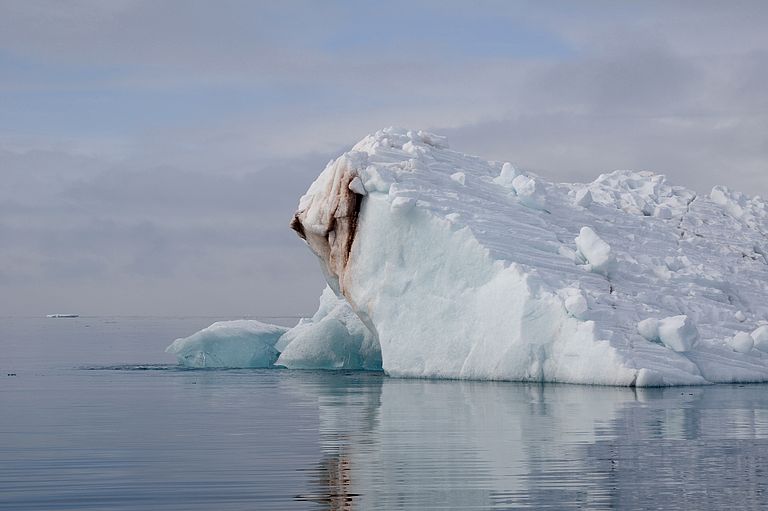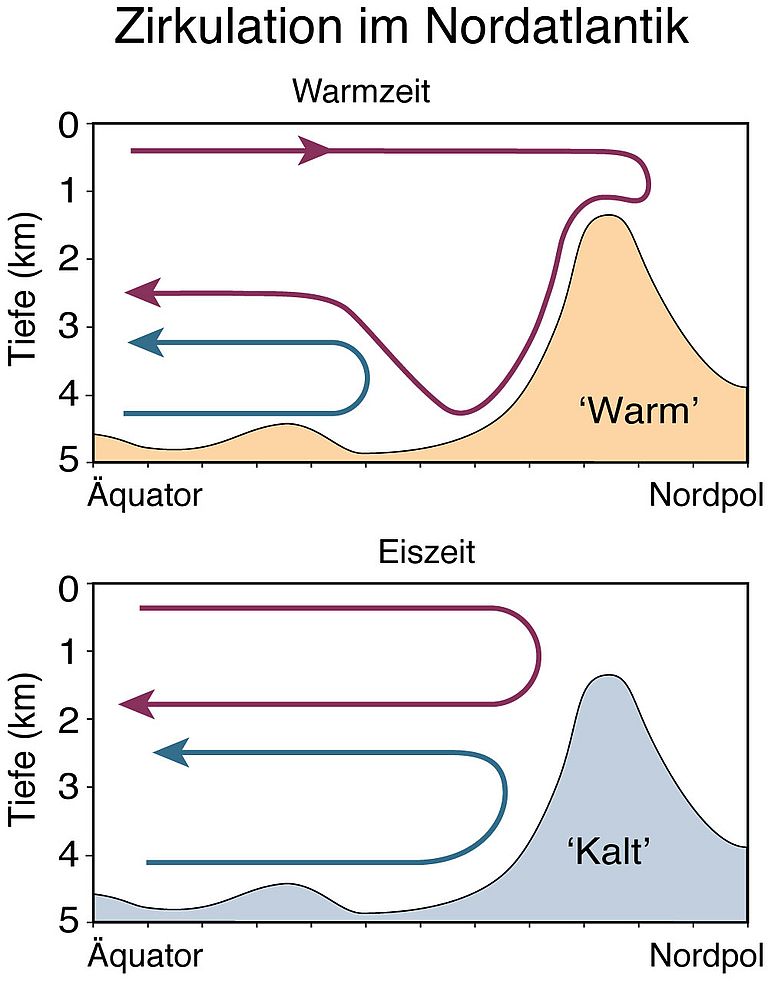Origin of ancient ice ages in the Southern Hemisphere?
International scientific team finds vital new hints towards underlying mechanisms of glaciations in the deep ocean
Although the climate of our planet today is rather warm, conditions during most of the past three million years were dominated by glacial conditions. During almost the past one Million years warm interglacials such as today prevailed every 100,000 years. Beforehand glacial cycles were significantly shorter, interglacials were recorded every 40,000 years, while glacial cycles between were not as cold as seen during the last Glacial Maximum some 20,000 years ago. Overall these changes between warm and cold climate occurred more than 50 times over the past 2.7 Million years. While scientists agree that these natural climatic changes are controlled by variations of Earth’s orbit around the sun ultimately leading to variable solar energy arriving in the atmosphere, the question towards reinforcing contributions to such climatic changes by ocean circulation patterns is still heavily debated. An international team of scientists including members of the GEOMAR Helmholtz Centre for Ocean Research Kiel now published evidence that at least three larger glaciations between 2.4 and 2.7 Million years before present were amplified by changes in deep ocean circulation that appear to be originating in the remote Southern Hemisphere.
The collaborative team was led by Dr Ian Bailey from the University of Exeter (UK) and Prof Paul Wilson from the University of Southampton (UK). The researchers measured the composition of isotopes of the chemical element neodymium that can be found in fish teeth preserved in a North Atlantic marine core to track the origin of deep waters bathing the bottom of the Atlantic Ocean during this climate transition.
Dr Bailey, a Geology Lecturer from the University of Exeter (UK) said: “We could not have made these new findings with confidence using only a classic method for tracing watermass origin such as carbon isotopes. But when we combined such data with an alternative novel proxy such as neodymium isotopes, we were able to reveal a dramatically new picture of watermass mixing in the deep North Atlantic during late Pliocene glacial intensification.”
It has long been argued that changes in North Atlantic circulation played a leading role in driving late Pliocene northern hemisphere glaciation because of its capacity to modulate the transfer of heat and moisture from the tropics to the poles. New findings suggest, though, that the North Atlantic Ocean was not a driving factor in this transition, but, through storage of atmospheric carbon dioxide in the deep Atlantic, it operated as a positive feedback that helped to usher in glaciation at this time.
Professor Wilson, who is Head of Palaeoceanography and Palaeoclimate Research Group at the University of Southampton, a unit within the School of Ocean and Earth Science based at the National Oceanography Centre said: “The mechanism driving these expansions of southern sourced water into the deep Atlantic still needs working on. It is thought that North Atlantic Deepwater formation is sensitive to glacial freshwater inputs to the ocean in the North. Yet our new data hint that these southern-hemisphere invasions may even predate the onset of major northern hemisphere glaciation. Counter intuitively our findings may therefore suggest that they were driven from the south.
Dr. Marcus Gutjahr, project partner at the GEOMAR Helmholtz Centre for Ocean Research Kiel added: “The finding of a deep Atlantic circulation regime such as seen during the last Glacial Maximum already as early as 2.7 Million years ago is remarkable. Such an extreme glacial circulation regime was only expected during peak glaciations of the past few 100,000 years, not earlier. Yet it appears that these early glaciations followed in parts very similar patterns to the latest most extreme glaciations.”
Reference:
Lang, D.L., I. Bailey, P.A. Wilson, T.B. Chalk, G.L. Foster and M. Gutjahr, 2016: Incursions of southern-sourced water into the deep North Atlantic during late Pliocene glacial intensification. Nature Geoscience, DOI: 10.1038/NGEO2688
Contact:
Press ReleasesDr. Andreas Villwock (GEOMAR, Communication & Media), Phone: (+49) 0431 600-2802, presse(at)geomar.de




